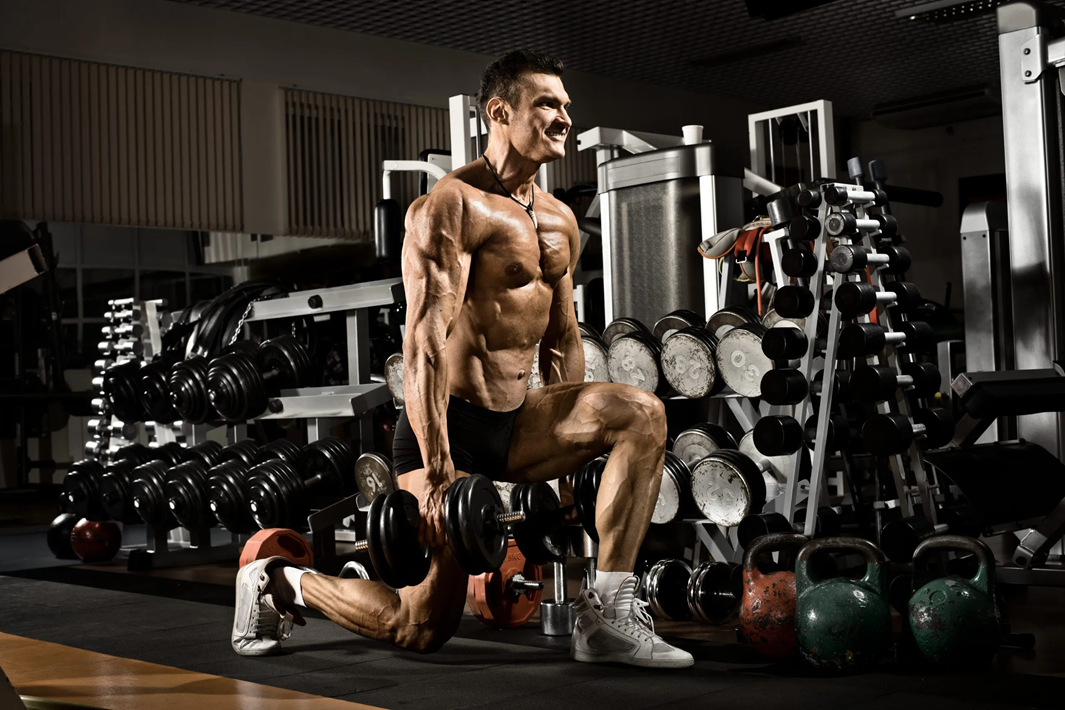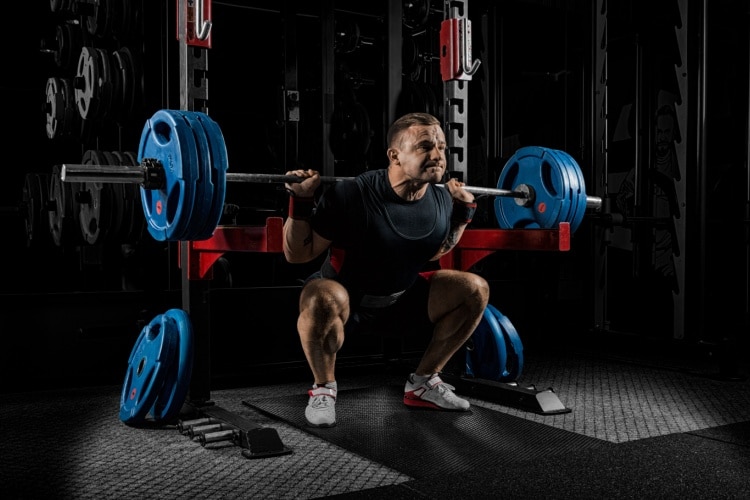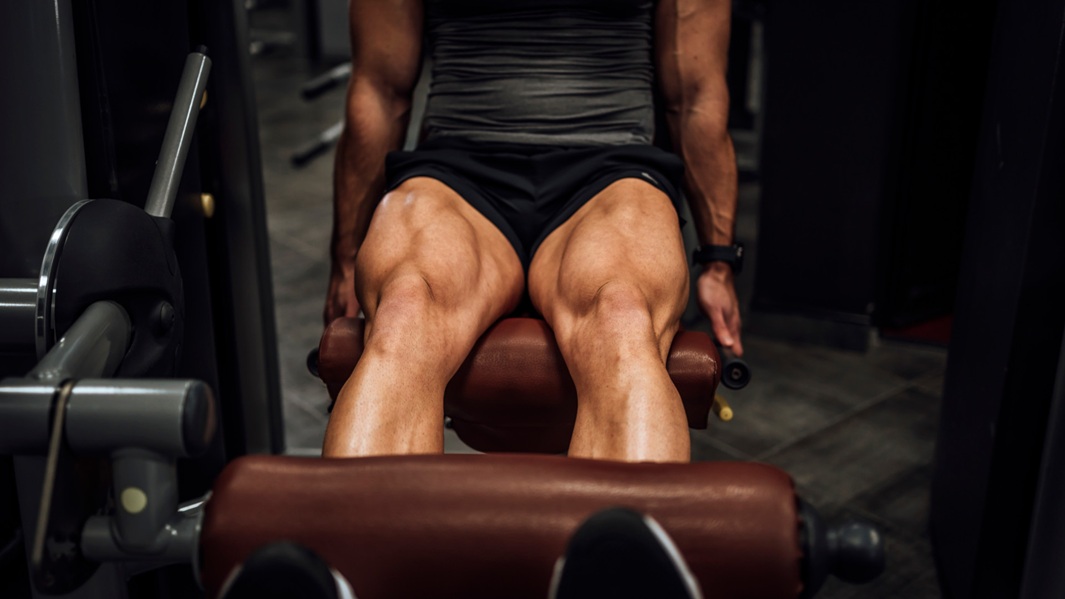The Best Quad Exercises for Mass: Ranked by Science, Range, and Real-World Results
When it comes to building massive, defined legs, the quads are the crown jewel of lower body aesthetics. They give your legs thickness from the front, balance out hamstring development, and create that coveted outer “sweep” that sets elite physiques apart.
But here’s the truth: not all leg exercises hit the quads equally. Many so-called “leg days” are dominated by hip- and glute-biased movements. If you want real quad mass — with visible lines, teardrop shape, and strength to match — you need to train smarter, not just harder.
This guide ranks the best quad exercises for hypertrophy, based on:
- Range of motion (ROM)
- EMG studies on muscle activation
- Biomechanics and joint angles
- Practical experience from bodybuilders and strength coaches
Tier 1: Elite Quad Builders
These are your meat-and-potatoes movements — the ones that create deep tension, high activation, and proven growth. Make at least one of these a centerpiece in every leg workout.
Front Squat
Why It Works:
Front squats shift the load anteriorly (to the front), forcing a more upright torso and maximizing knee flexion. That makes it one of the most quad-dominant compound lifts in existence — with far less glute and lower back involvement than back squats.
Bodybuilder Bonus:
Also builds a stronger core and transfers well to Olympic lifts for athletes.
Pro Tips:
- Elevate your heels (lifting shoes or wedge) for deeper range
- Keep elbows high and chest up to maintain posture
- Use straps if your front rack mobility is limited
Hack Squat (Machine)
Why It Works:
The hack squat is a locked-in machine movement that allows for maximum depth and overload without the balance demands of a free-weight squat. It allows for deep knee flexion, which places a huge stretch on the quads — critical for hypertrophy.
Bodybuilder Bonus:
Safe to take to failure and excellent for slow eccentrics.
Pro Tips:
- Keep your feet low and narrow on the platform
- Avoid bouncing — pause slightly at the bottom for full stretch
- Control the descent for 3–4 seconds per rep
Leg Press (Feet Low & Narrow)
Why It Works:
When done with the feet low and narrow, the leg press becomes quad-focused by minimizing hip extension. It’s easier on the spine, easier to recover from than barbell squats, and perfect for volume training.
Bodybuilder Bonus:
Allows high-rep sets and drop sets for metabolic stress without technical breakdown.
Pro Tips:
- Don’t lock out at the top — keep constant tension
- Use a controlled tempo (3–1–2) for time under tension
- Use full range, going deep without letting hips round off the pad
Bulgarian Split Squat (Quad-Focused Setup)
Why It Works:
The Bulgarian split squat creates massive unilateral overload, a deep stretch in the working quad, and activates the vastus medialis (VMO). It’s a serious leg builder and symmetry corrector.
Bodybuilder Bonus:
Helps eliminate side-to-side imbalances and reduces injury risk.
Pro Tips:
- Use a short stride to increase knee travel
- Keep torso upright for more quad, less glute
- Don’t over-reach the back foot — you’re not doing gymnastics
Tier 2: Isolation & Supplementary Movements
These exercises target the quads in isolation or in less demanding contexts, making them perfect for finishers, high-rep sets, or injury-friendly programming.
Leg Extension
Why It Works:
The leg extension is the only pure quad isolation movement in existence. It eliminates glutes, hams, and hips, and hits the rectus femoris hard at the top of the movement.
Bodybuilder Bonus:
Ideal for pre-fatigue or pump sets without joint strain.
Pro Tips:
- Pause for 1–2 seconds at the top to amplify contraction
- Use slow eccentrics: 3–1–3 tempo builds serious tension
- Finish your workout with a triple drop set for metabolic stress
Sissy Squat (Bodyweight or Machine)
Why It Works:
Sissy squats demand full knee flexion and create a massive stretch across the entire quad, especially the VMO. Done correctly, it’s one of the hardest bodyweight exercises for quads.
Bodybuilder Bonus:
Builds the lower quad and improves knee control.
Pro Tips:
- Start with bodyweight and control your descent
- Use a wall or squat wedge for support
- Once mastered, use plate-loaded sissy squat machines
Step-Ups (Quad-Biased)
Why It Works:
Step-ups create unilateral overload from a deep range of motion. Keeping the torso vertical and using a high step emphasizes the quads by minimizing hip extension.
Bodybuilder Bonus:
Enhances balance, symmetry, and targets the VMO.
Pro Tips:
- Use a box high enough for your knee to hit 90°+
- Push through the heel and avoid using the trailing leg to assist
- Keep your chest upright and core tight throughout
Tier 3: Complementary Movements
These exercises aren’t essential every session, but they provide novel stimulus, help target smaller muscle regions, and increase training variety.
Walking Lunge (Short Stride)
Why It Works:
When done with a shorter stride, walking lunges become more quad-dominant by increasing forward knee travel and minimizing glute drive.
Pro Tips:
- Stay upright — don’t lean forward
- Use moderate loads for high reps (12–20 steps per leg)
- Great as a finisher or metabolic circuit
Split Squat with Heel Elevation
Why It Works:
Elevating the front heel shifts weight forward and increases dorsiflexion, allowing greater quad activation — especially the VMO.
Pro Tips:
- Use a wedge or 5–10 lb plate
- Stay slow and controlled for maximum tension
- Combine with tempo work (e.g., 4s down) for hypertrophy
Smith Machine Squat (Narrow Stance)
Why It Works:
The Smith machine allows for an artificially upright torso and controlled bar path — ideal for quad-focused squat variations with reduced balance demands.
Pro Tips:
- Use a narrow stance with feet slightly in front
- Go deep and slow — avoid bouncing
- Use for hypertrophy blocks (10–15 reps)
How to Program for Quad Mass
Building impressive quads isn’t just about picking the right exercises — it’s about combining them in the right order, at the right intensities, with strategic progression.
✅ Heavy Compound Movements (6–10 Reps)
Use these for your primary quad overload:
- Front Squats
- Hack Squats
- Leg Press
✅ Mid-Range Hypertrophy Sets (10–15 Reps)
Perfect for volume and form focus:
- Bulgarian Split Squats
- Smith Machine Squats
- Step-Ups
✅ High-Rep Finishers (15–30 Reps)
Use for burnout sets and metabolic stress:
- Leg Extensions
- Sissy Squats
- Band Work or Wall Sits
Sample Quad-Dominant Workout (Push Day or Leg Focus)
- Front Squats – 4 sets of 6–8
2. Hack Squat (Narrow Stance) – 3 sets of 10
3. Bulgarian Split Squat – 3 sets of 12 per leg
4. Leg Extension (3–1–3 Tempo) – 3 sets of 15–20
Optional Finisher:
Sissy Squats – 2 sets to failure
Tip: Rotate Tier 1 lifts every 3–4 weeks, and change your rep focus every 6–8 weeks to prevent adaptation.
Common Quad Training Mistakes
Even the best movements won’t work if you’re making these classic errors:
- Too wide a stance: Prioritizes glutes over quads
- Cutting depth: Short ROM means missed hypertrophy
- Ignoring tempo: Fast reps = lost tension
- Neglecting isolation: Compounds alone won’t build shape
- No unilateral work: Leads to imbalances and weak VMO
Final Word: Quads Built by Precision, Not Luck
Massive quads don’t happen because you squat sometimes. They happen because you train them with intent — using proven movements, maximizing range, and progressing with purpose.
Focus on:
- Stretching the muscle under load
- Controlling the eccentric
- Locking out with intent
- Using unilateral and isolation movements for shape and symmetry
Big legs start with strong quads. Choose your tools wisely, train them brutally, and let your results speak for themselves.
🔗 Related Articles:
- How to Build Bigger Quads
- Quad Sweep Guide: Targeting the Vastus Lateralis
- Why Your Quads Aren’t Growing (And How to Fix It)
- Leg Press vs Squats for Quad Hypertrophy
- Unilateral Leg Training for Symmetry and Size





